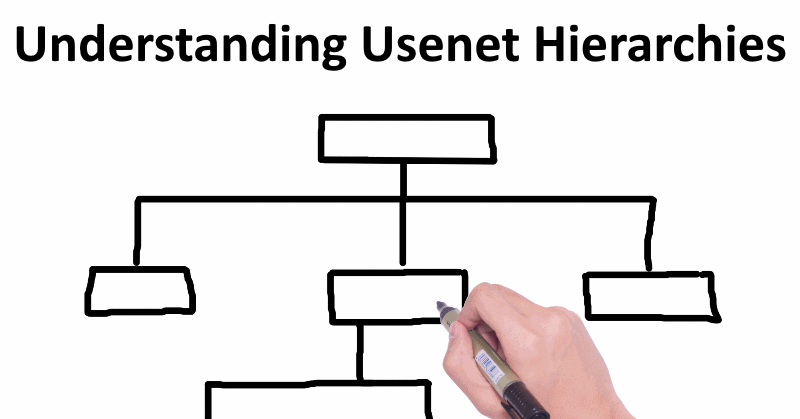Understanding the Usenet Hierarchies
Last Updated: Sep 14, 2025
With so many topics and groups available on the Usenet it was long ago arranged into separate sections in order to make it easier for people to search and find the topics that they wanted and the groups they wanted to join. These different sections are known as the Big Eight Hierarchies. The big eight consist of the following:

What Are The Big Eight
- Comp - Computers and software
- Sci - Sciences
- Soc - Social issues
- Talk - Debate
- News - Topics about Usenet
- Rec - Hobbies and recreation
- Misc - All others
- Alt - Binaries and Photos
Key Features of the Big Eight Hierarchies:
- Each hierarchy covers a broad subject area, making navigation easier.
- Groups are named using a dot notation (e.g., comp.lang.python, sci.physics, rec.sport.soccer).
- Most hierarchies are moderated and require a proposal and voting process for new group creation (except alt).
- Hierarchies help prevent clutter and duplication, keeping Usenet organized.
- The Big Eight were established to bring order to the rapidly growing Usenet in the 1980s.
Historical Milestones:
- 1979: Usenet is created by Tom Truscott and Jim Ellis.
- Early 1980s: Usenet expands globally, connecting universities and research centers.
- Mid-1980s: The Big Seven hierarchies are formalized to organize newsgroups.
- 1987: John Gilmore creates the alt hierarchy, allowing unrestricted group creation.
- 1990s: The rise of alt.binaries transforms Usenet into a major file-sharing platform.
- 2000s-present: Usenet remains active, especially for technical, academic, and binary-sharing communities.
Group Creation Process (Big Eight):
- Propose a new group in the relevant newsgroup (e.g., news.groups).
- Provide a detailed description and justification for the group.
- Community discussion and feedback period.
- Email-based voting process if enough interest is shown.
- If approved, a moderator creates the group and it is propagated across servers.
About the Alt Hierarchy:
- Created to bypass bureaucracy and allow free group creation.
- Includes everything from technical topics to pop culture, adult content, and binaries.
- Group propagation depends on server administrators; popular groups spread widely.
- Main sections: alt.sex (discussion/adult topics) and alt.binaries (file sharing).
- The alt hierarchy is less regulated, so content can be more controversial or risqué.
Technical and Cultural Impact:
- Dot notation allows for hierarchical organization and easy searching.
- Binary groups required new encoding methods (e.g., uuencode, yEnc) for large files.
- Usenet played a major role in early Internet culture, influencing forums, mailing lists, and social media.
- Many technical standards and open source projects were discussed and developed in Usenet groups.
- Usenet’s decentralized nature means groups are rarely deleted and can persist for decades.
Modern Usenet Usage:
- Still used for specialized technical discussions, academic collaboration, and file sharing.
- Retention policies and server capabilities have improved, allowing access to years of posts and files.
- Web forums and social media have replaced much of Usenet’s original discussion role, but its influence remains.
- Understanding the hierarchies is essential for effective navigation and participation in Usenet today.







